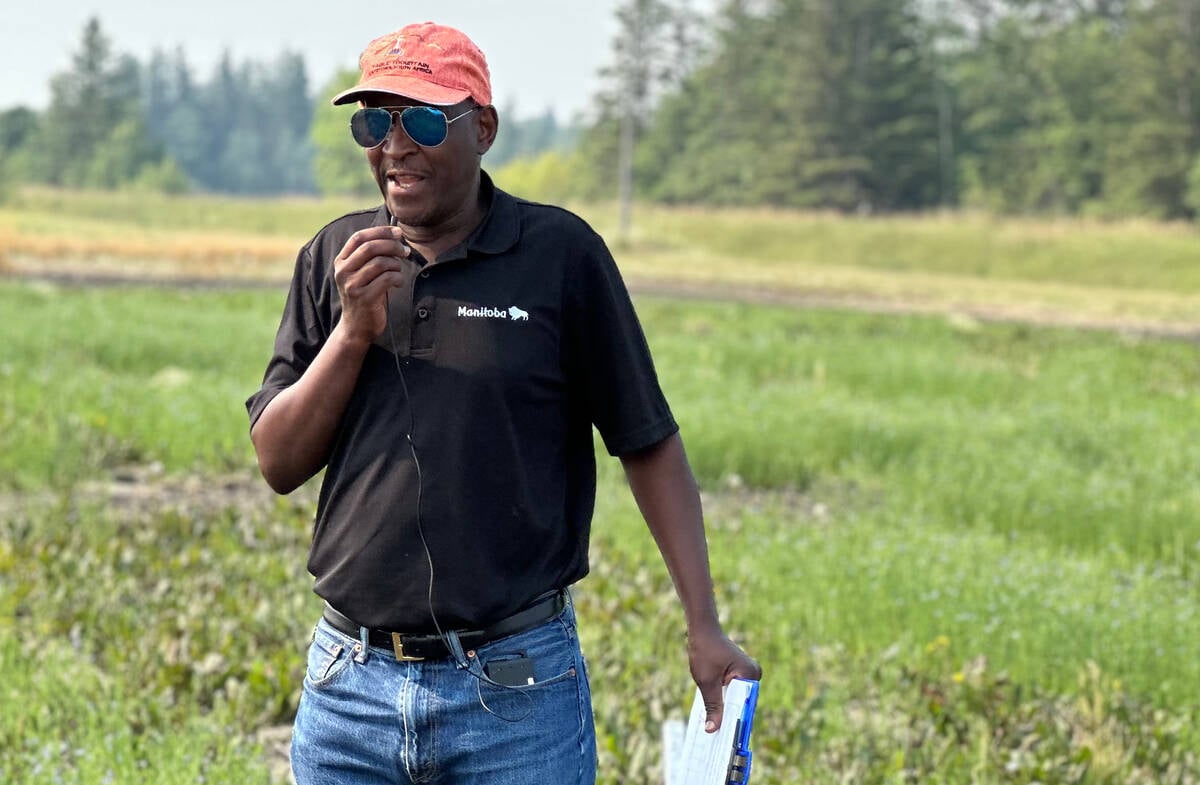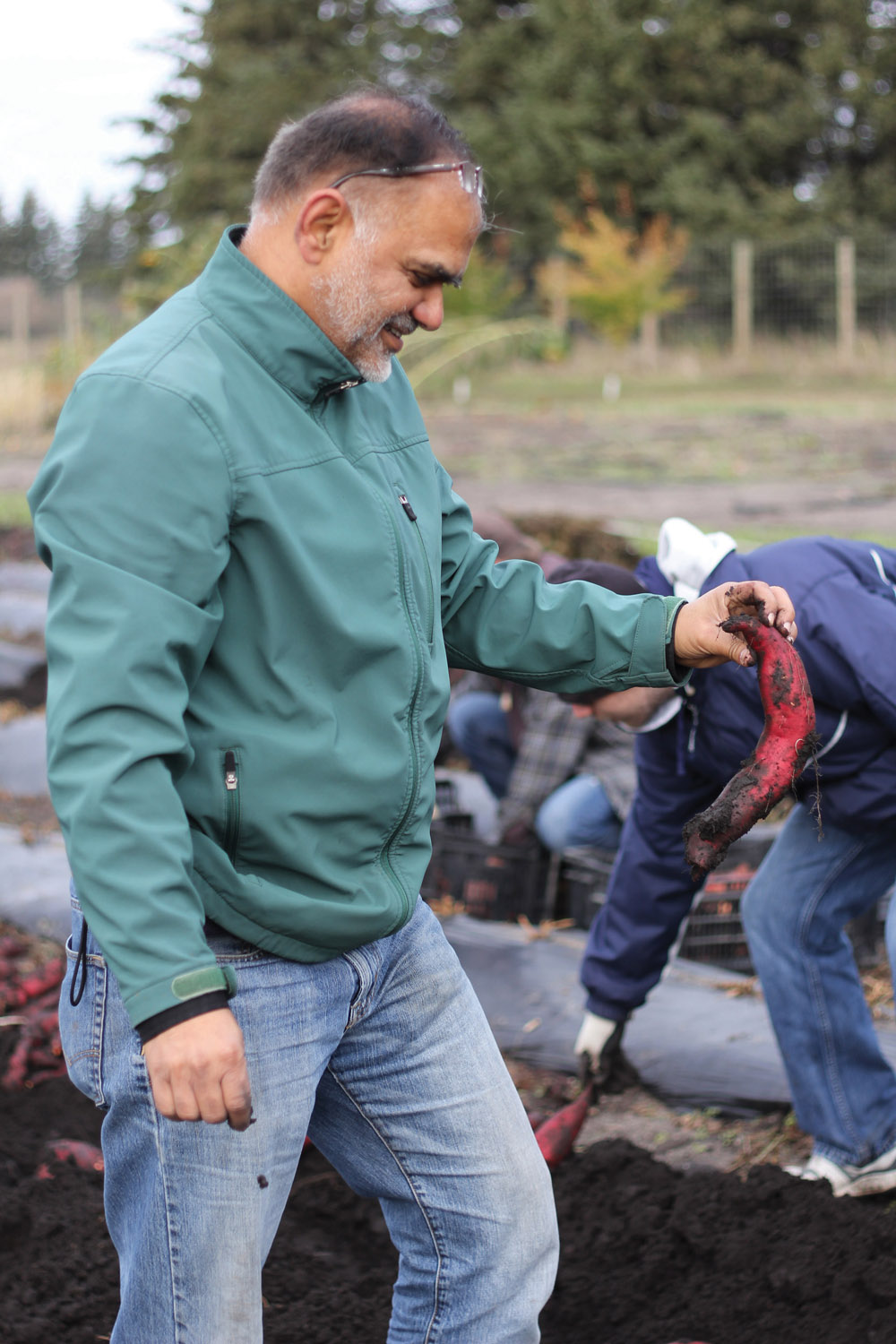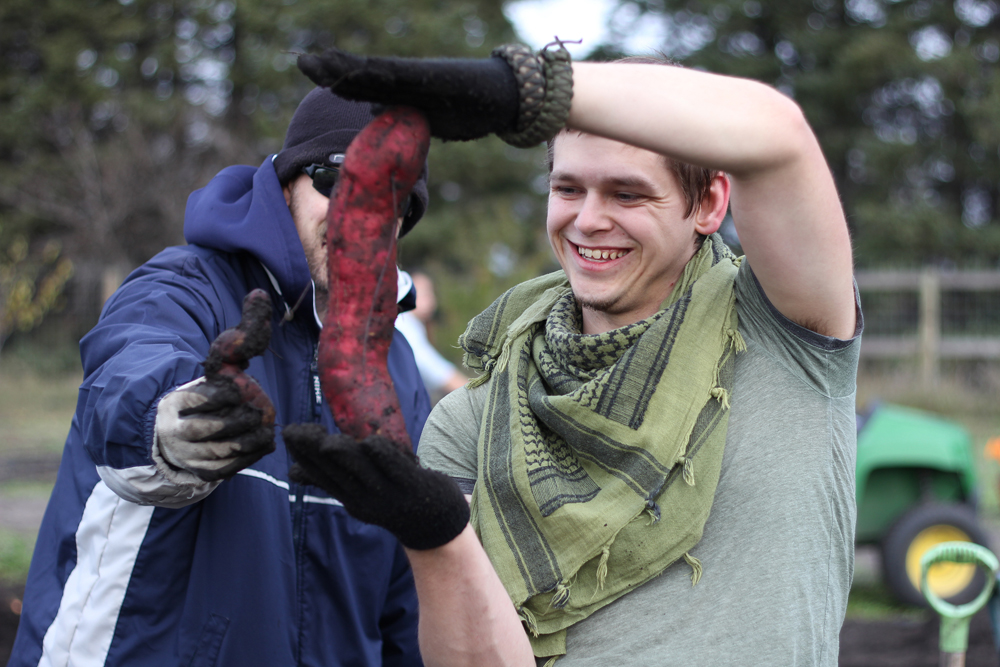Halloween may be over, but Sajjad Rao is still working on something sweet and orange for Manitoba producers.
The Assiniboine Community College faculty member and Brandon University adjunct professor has been researching the viability of Prairie-grown sweet potatoes at the college’s three-acre research plot. Working with students in the school’s horticulture production and sustainable food systems program, he has narrowed his research down to four short-season varieties that show promise in Manitoba’s climate.
“When I started three years back, I had eight or 10 varieties which were from Nova Scotia and other varieties from the eastern side of the country,” said Rao. “So I basically started screening from 20 varieties… and I came up with the four varieties we are working with now.”
Read Also

How much nitrogen can farmers really cut?
Manitoba fertilizer trials look for nitrification inhibitor sweet spot, to lower greenhouse gas emissions and cost without hurting yield.
He is also working with Vineland Research and Innovation Centre in Ontario, which has already developed sweet potato varieties for other regions of the country. But Manitoba and other Prairie provinces present unique challenges in terms of a shorter growing season and cooler temperatures, which Rao believes is part of the reason sweet potatoes haven’t been seen as a viable option for Prairie producers in the past.
“I think it’s because the crop itself doesn’t give the impression that it can be grown here, because it is a purely tropical crop and we are in a temperate region of the world,” he said. “I mean they grow them in North Carolina but that is an entirely different climate.”
- Read more: Spud producers pull off second record crop
The vast majority of sweet potatoes produced today is grown in China.
But after three years of testing and trials, the researcher doesn’t see any reason why the super-nutritious vegetable can’t be grown in Manitoba, even if he is a few years away from pinpointing the perfect variety.
“One thing I think of is crop diversification, it is always important for any cropping system. I mean continuously growing one crop in an area is not an ideal situation, so there should always be that need to add something different to the cropping system… for some that could be sweet potatoes,” said Rao.

Because sweet potatoes don’t belong to the same family of plants as conventional potatoes, but are planted and harvested with some similar equipment, they could potentially provide a buffer against disease and pests, without a farmer having to reinvent the wheel, he said.
“This is a root crop and not a tuber crop, so it is a different family and there are entirely different requirements, but the good thing is that they both grow underground so there is some awareness and there is the technology due to potato growers that are already out there due to the awareness of other crops like carrots and onions,” Rao said. “I think there is good adoptability.”
He hopes to begin field trials in Manitoba next summer.
“I have interested growers who are very much interested in growing sweet potatoes and probably, if everything works well in terms of planting material and everything else, could begin next summer,” he said, adding the first grower in line for test plots already grows some potatoes near the college.
As for who might adopt sweet potatoes on a commercial scale, Rao said it is still far too early to tell. But he believes it will depend more on market forces than agronomy concerns once research has wrapped up and a variety is available.
“For my project I think it will be another three to four years till we have the agronomy package,” he said. “So my goal is to engage farmers now and to hopefully enrol them in this crop so they have some know-how.”















